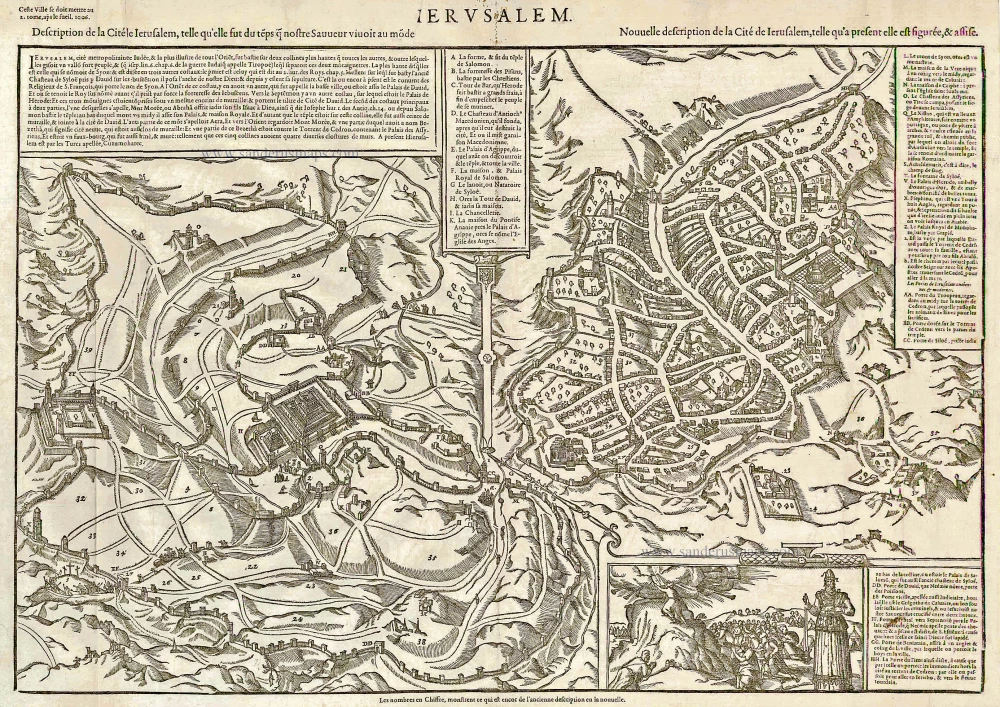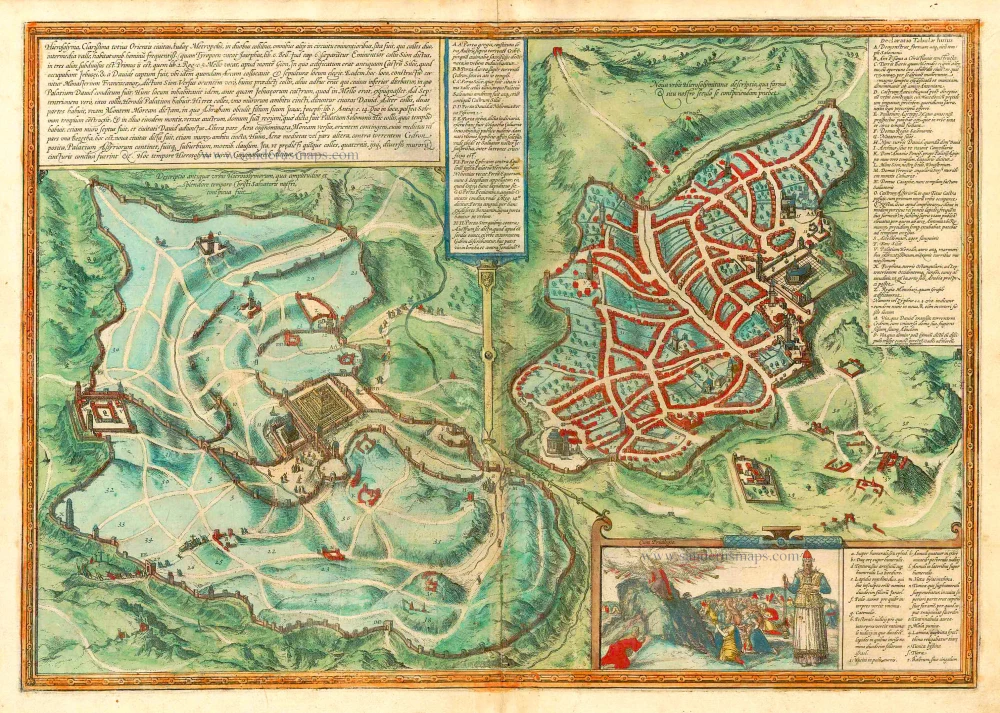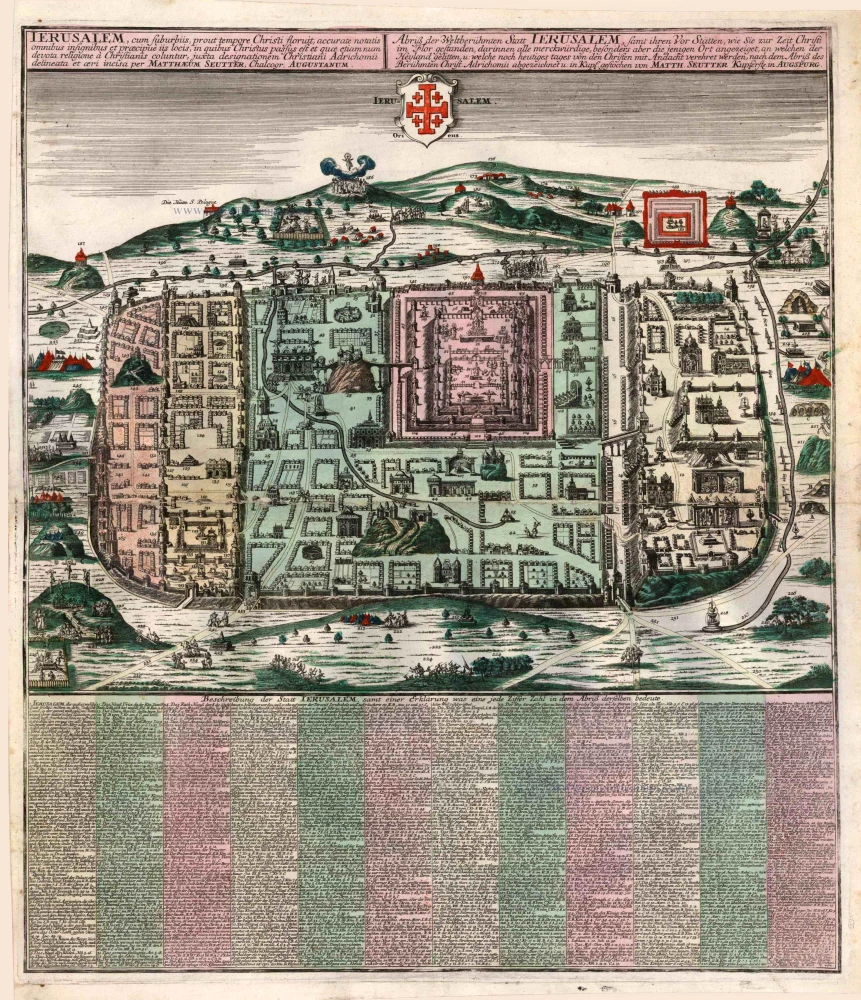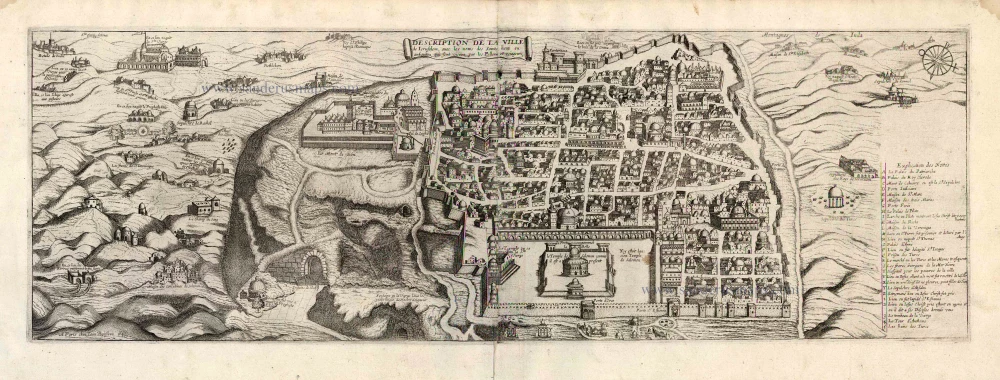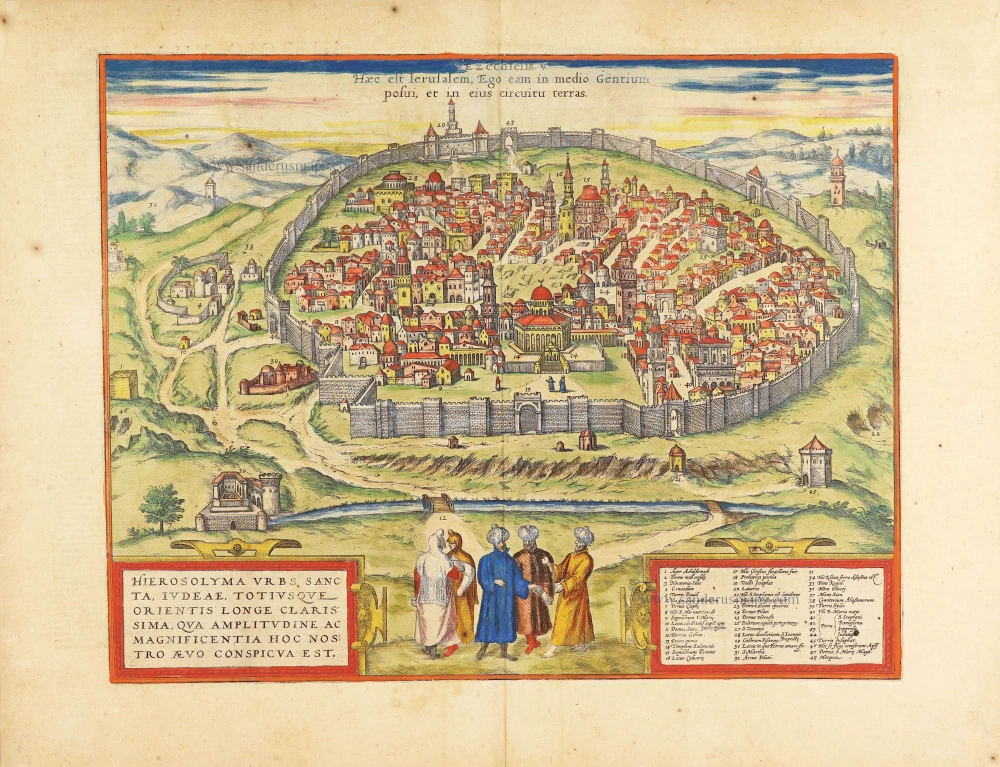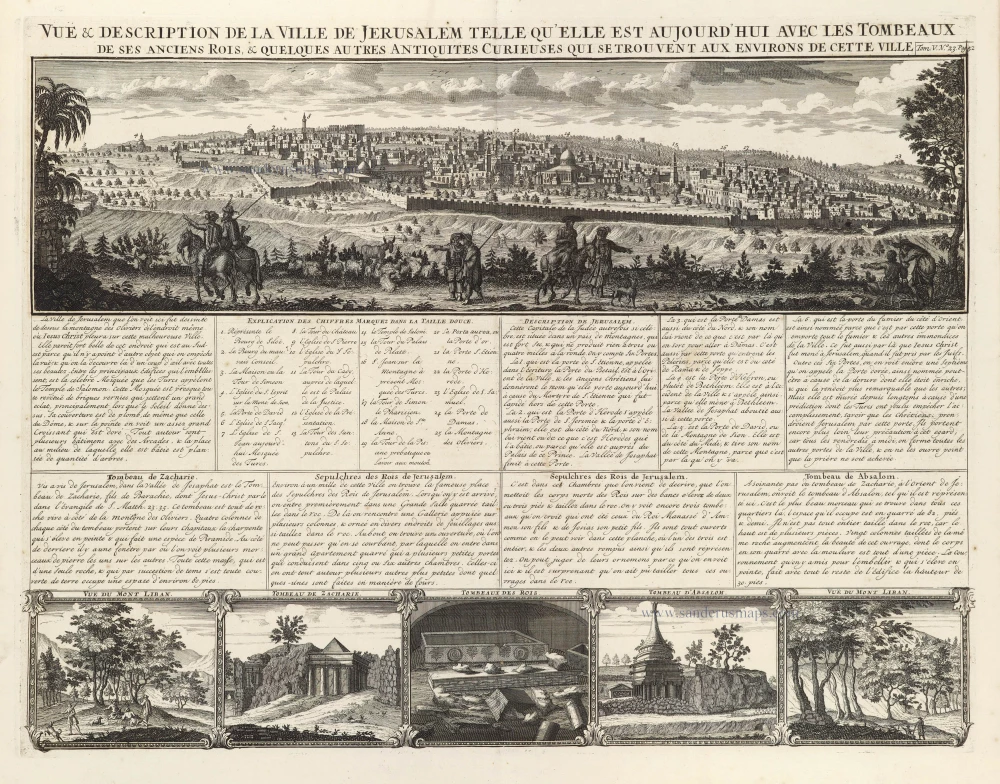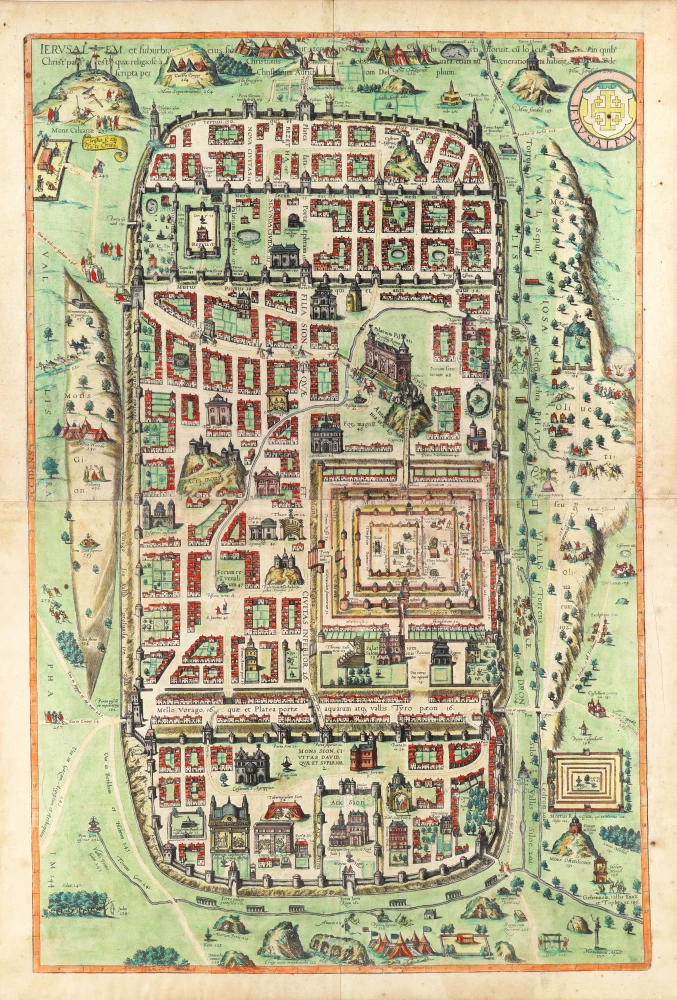Jerusalem, by François de Belleforest. 1575
The Cosmographie Universelle of F. de Belleforest was published in a shared edition by Nicolas Chesneau and Michel Sonnius. The objective of the two partners was to reprint Sébastien Münster's Cosmographie in French. Münster's work, published in Basel in 1544, had indeed been a great success and had known multiple reissues. It had been published in French in 1552, but Chesneau and Sonnius, noting that Münster had mainly treated his own country, Germany, wanted to satisfy the tastes of their compatriots more.
They appealed for the text of the work to François de Belleforest (1530-1583). Belleforest probably helped Chesneau and Sonnius in their quest for new city plans.
Belleforest's Cosmographie is presented in two parts, the first of which is divided into two volumes; each of the three volumes has its title. Some copies bear the imprint of Chesneau and others that of Sonnius.
Of the 163 plates in the Cosmographie, only 49 are copied from the work of Sebastian Münster. Little is known about the engravers of the Cosmographie. The name of Cruche appears only once, at the bottom of the plate of Paris. Raymont Rancurel is the second known engraver in the Cosmographie. In 1572 appeared, the first volume of the Civitates Orbis Terrarum of Braun and Hogenberg. Twenty of these plates were copied by the Cosmographie of Belleforest.
Ierusalem.. - Description de la Cité de Ierusalem, telle qu'elle fut du te[m]ps q[ue] nostre Sauveur vivoit au mo[n]de.
Item Number: 27323 Authenticity Guarantee
Category: Antique maps > Asia > Holy Land
Old, antique map of Jerusalem, by François de Belleforest.
On the left is an imaginary plan of the ancient city at the time of Jesu Christ. On the right is a plan of the modern city in the 16th century. With a vignette of Moses receiving the Commandments.
Title: Ierusalem.. - Description de la Cité de Ierusalem, telle qu'elle fut du te[m]ps q[ue] nostre Sauveur vivoit au mo[n]de.
Oriented to the west.
Date of the first edition: 1575.
Date of this map: 1575.
Woodcut, printed on paper.
Size (not including margins): 305 x 445mm (12.01 x 17.52 inches).
Verso: Blank.
Condition: Excellent, folds as issued.
Condition Rating: A+.
From: La Cosmographie Universelle de tout le Monde. Paris, Nicolas Chesneau - Michel Sonnius, 1575. (= French edition of Münster's Cosmographia).
The Cosmographie Universelle of F. de Belleforest was published in a shared edition by Nicolas Chesneau and Michel Sonnius. The objective of the two partners was to reprint Sébastien Münster's Cosmographie in French. Münster's work, published in Basel in 1544, had indeed been a great success and had known multiple reissues. It had been published in French in 1552, but Chesneau and Sonnius, noting that Münster had mainly treated his own country, Germany, wanted to satisfy the tastes of their compatriots more.
They appealed for the text of the work to François de Belleforest (1530-1583). Belleforest probably helped Chesneau and Sonnius in their quest for new city plans.
Belleforest's Cosmographie is presented in two parts, the first of which is divided into two volumes; each of the three volumes has its title. Some copies bear the imprint of Chesneau and others that of Sonnius.
Of the 163 plates in the Cosmographie, only 49 are copied from the work of Sebastian Münster. Little is known about the engravers of the Cosmographie. The name of Cruche appears only once, at the bottom of the plate of Paris. Raymont Rancurel is the second known engraver in the Cosmographie. In 1572 appeared, the first volume of the Civitates Orbis Terrarum of Braun and Hogenberg. Twenty of these plates were copied by the Cosmographie of Belleforest.

